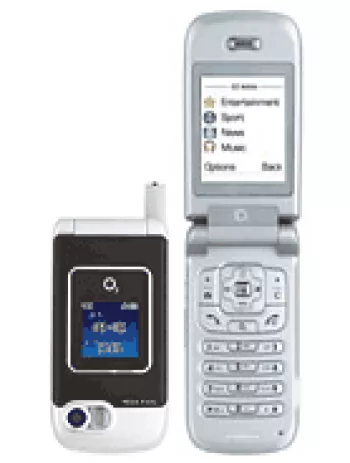
Overview of O2 X4
The O2 X4 is a classic mobile device that was first announced in the fourth quarter of 2004. The handset was part of the feature phone category, widely appreciated during its time for its compact design and basic functionalities. Although it has been discontinued, the O2 X4 remains a nostalgic piece for many technology enthusiasts who experienced the early days of mobile phone innovation.
Design and Build
The O2 X4 measures 89.9 x 45.1 x 24 mm and weighs 116 grams. This compact build made it highly portable and easy to handle. The phone's dimensions were common for devices during its era, fitting snugly in pockets and small bags. It also featured a Mini-SIM slot, emphasizing its straightforward and user-friendly design. The O2 X4 was available in various colors, catering to different user preferences.
Display
Equipped with a TFT screen with support for 256K colors, the O2 X4 offered a color-rich display experience despite its size. While the exact dimensions of the screen are unspecified, it supported a resolution of 176 x 220 pixels, which was standard for phones in its class. The display was adequate for viewing photos, navigating through the phone's menu, and using installed applications.
Camera
The O2 X4 featured a 1.3 MP main camera. While modest by today's standards, this camera was a notable feature at the time, giving users the ability to capture images and videos on-the-go. The inclusion of an LED flash somewhat enhanced its photography capabilities in low-light environments. However, there was no front-facing or selfie camera, as such features were not prevalent in feature phones of this era.
Performance and Storage
The phone was not designed for high-speed computing but rather for stable and reliable performance. The O2 X4 allowed storage expansion via a miniSD card slot, which came with a 32 MB card included. The phonebook could store up to 500 entries with the feature of photo call, enhancing the user’s personal call management.
Battery Life
A removable Li-Ion battery powered the device, boasting up to 180 hours of standby time and approximately 3 hours of talk time. This battery life was relatively efficient, catering to the needs of users who depended on their phones for essential communication tasks throughout the day.
Network and Connectivity
The O2 X4 supported GSM and UMTS technologies, operating on GSM 900 / 1800 and UMTS 2100 bands. The connectivity features included an infrared port, but it lacked Bluetooth, WLAN, GPS, and regular USB connectivity. Despite these limitations, the proprietary USB connection allowed for basic data transfer to and from compatible devices.
Sound and Multimedia
Sound features included downloadable polyphonic and MP3 ringtones. However, the O2 X4 did not have a loudspeaker or a 3.5mm audio jack, which limited audio output options. Without radio, users had to rely on the phone’s web browser and downloading capabilities for entertainment and multimedia functions.
Software and Features
Running on a basic feature phone operating system, the O2 X4 supported SMS and MMS messaging, and it featured a WAP 2.0/xHTML browser for limited internet browsing needs. The phone supported Java MIDP 2.0, allowing the installation of Java-based games and applications. Users could also enjoy pre-installed games, with the option to download more.
Legacy and Impact
The O2 X4 is remembered as a practical and user-friendly device from a transformative era in mobile technology. Despite its discontinuation, the model stands as a testament to the early 2000s mobile design and functionality. Its limitations also highlight how far mobile technology has evolved, demonstrating the rapid advancements made in the subsequent decades.
Final Thoughts
While the O2 X4 may not rival today's smartphones in terms of specs or features, it remains a significant piece of tech history. The phone's blend of basic functionalities, durable design, and practical performance made it a reliable communication tool during its time of use.
Key Features of O2 X4
- GSM/UMTS Technology with 2G and 3G bands support
- Compact body with dimensions of 89.9 x 45.1 x 24 mm and lightweight at 116 g
- TFT display with 256K colors and a resolution of 176 x 220 pixels
- Expandable memory with miniSD card slot and 32 MB included
- 1.3 MP main camera with LED flash
- Photo call capability with phonebook supporting 500 entries
- Infrared port for connectivity
- Supports SMS and MMS messaging with WAP 2.0/xHTML browser
- Java support with downloadable games
- Removable Li-Ion battery offering up to 180 hours of standby and up to 3 hours of talk time
Key Drawbacks of O2 X4
- Limited Network Support: Only supports GSM and UMTS; lacks 4G and 5G support.
- Discontinued Status: The device is no longer supported or produced.
- Lack of Display Size Information: No specific size provided for the display.
- Limited Camera Capabilities: Only 1.3 MP single main camera, without a dedicated selfie camera.
- No Loudspeaker Support: The phone does not include a loudspeaker.
- No 3.5mm Audio Jack: Lack of standard headphone jack for audio connectivity.
- Lack of Modern Connectivity Features: No WLAN, Bluetooth, GPS, or Radio support.
- Proprietary USB Port: Uses a proprietary USB connection instead of standard ports.
- Basic Battery Life: Limited standby time of up to 180 hours and talk time of up to 3 hours.
View Also
More Phones
All Rights Reserved +13665 Phones © Mobilawy 2025
























